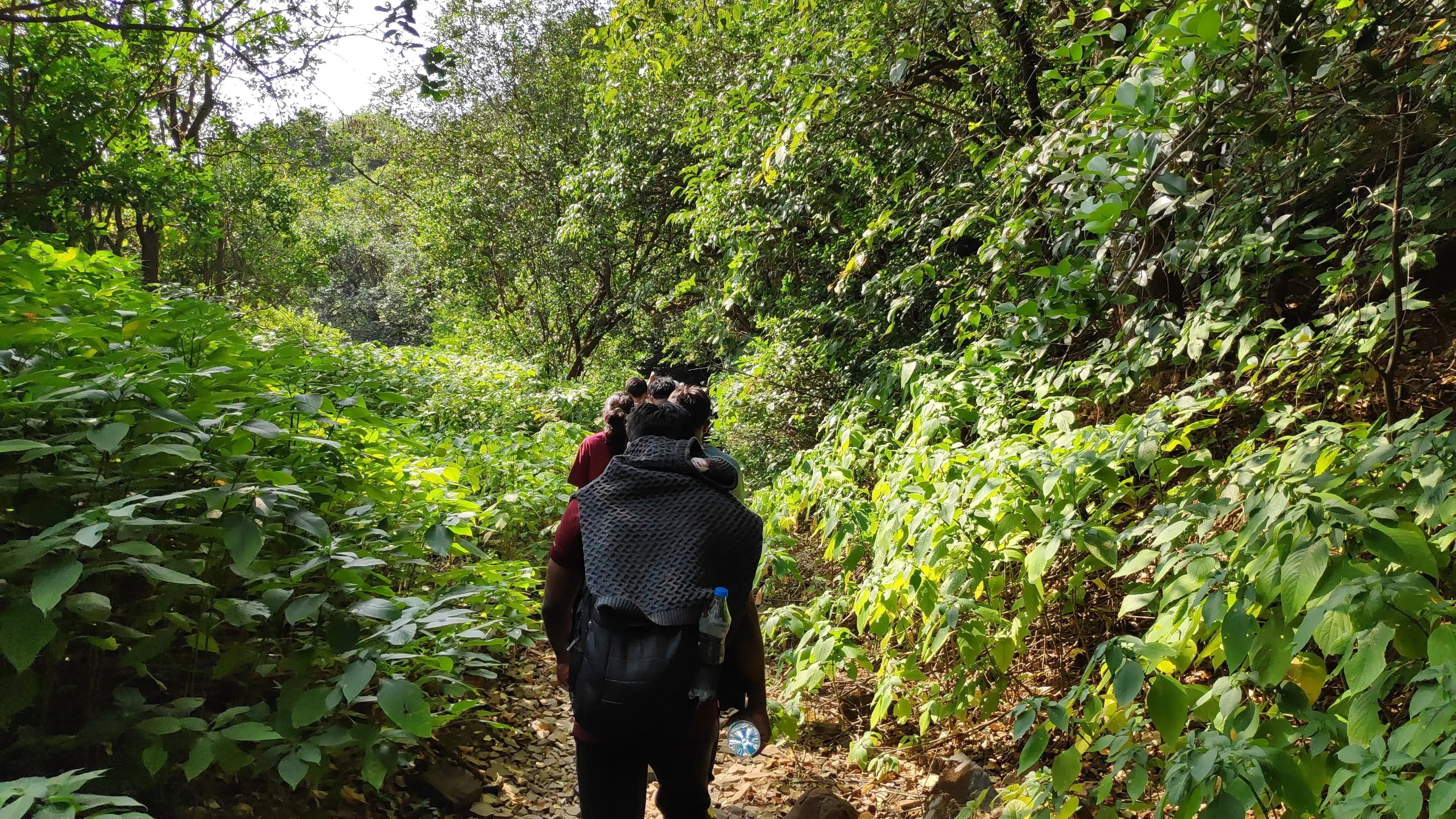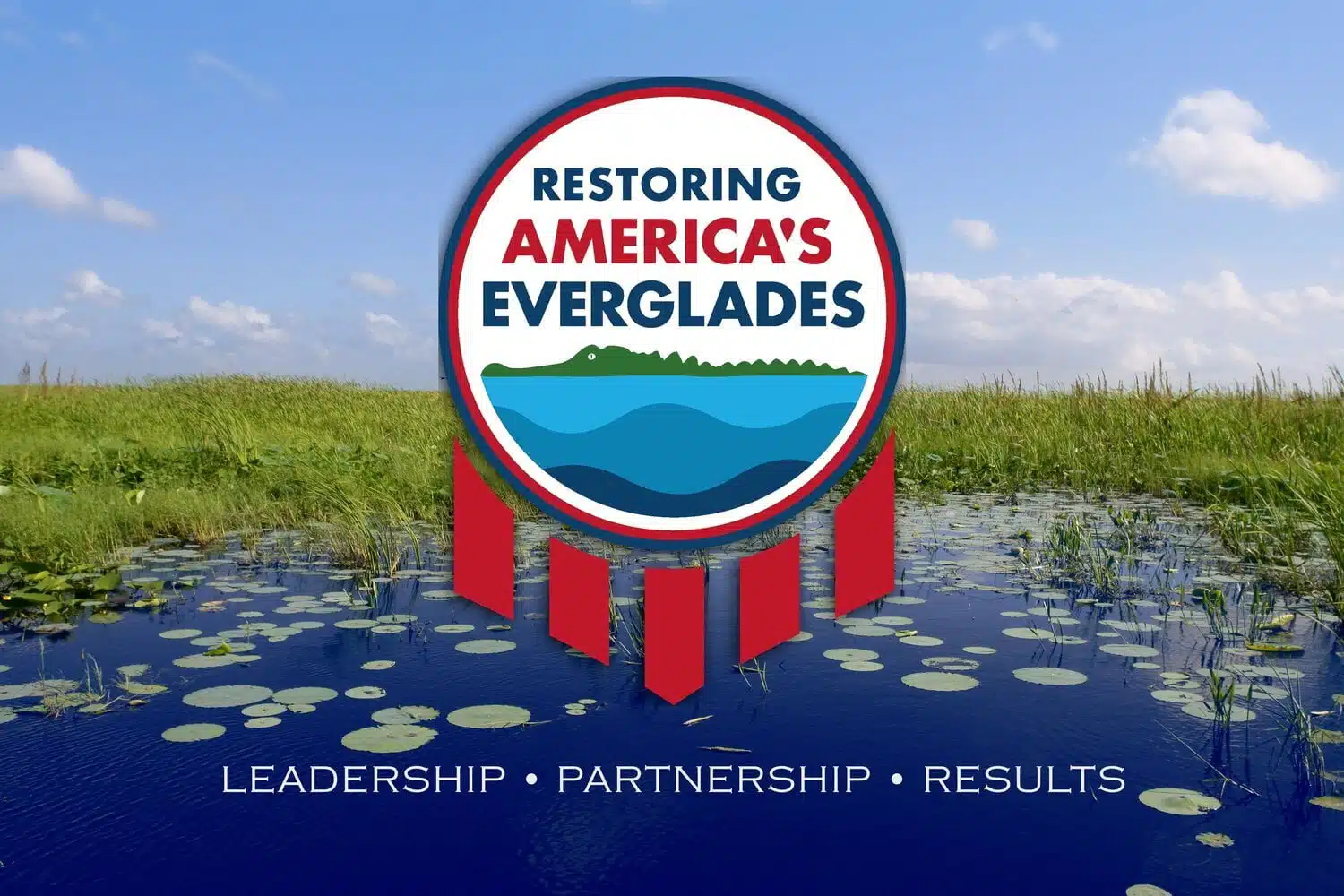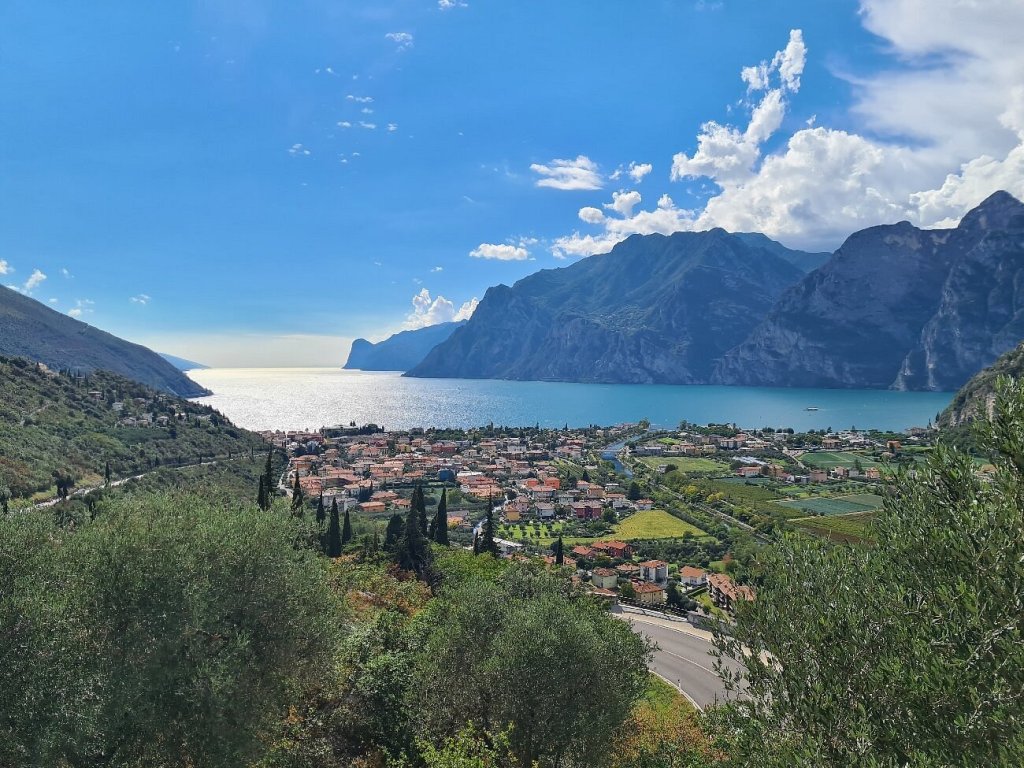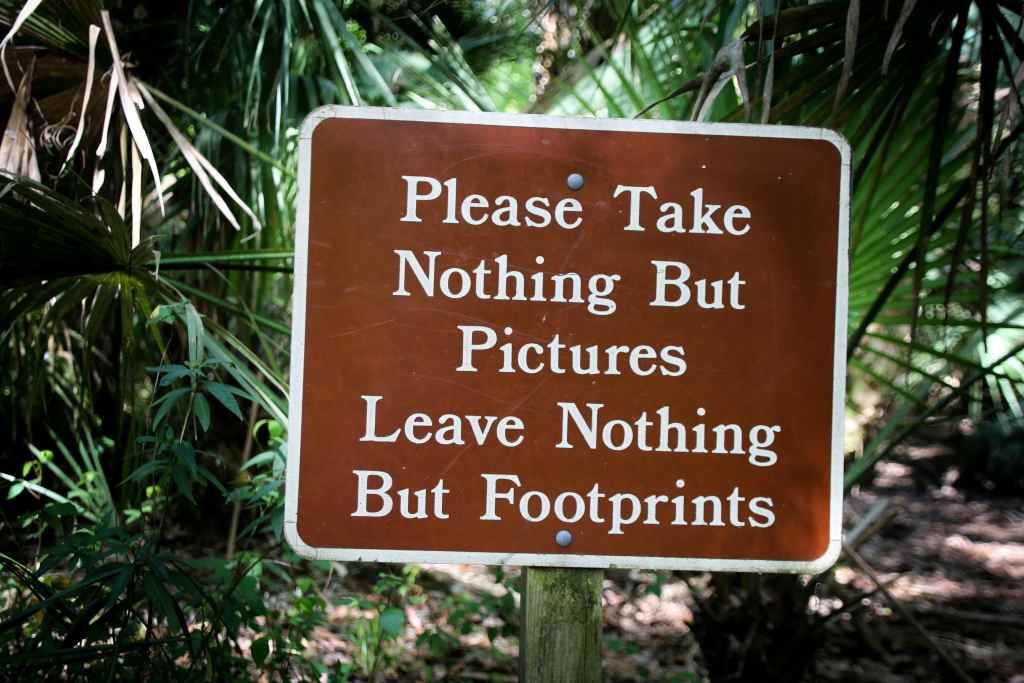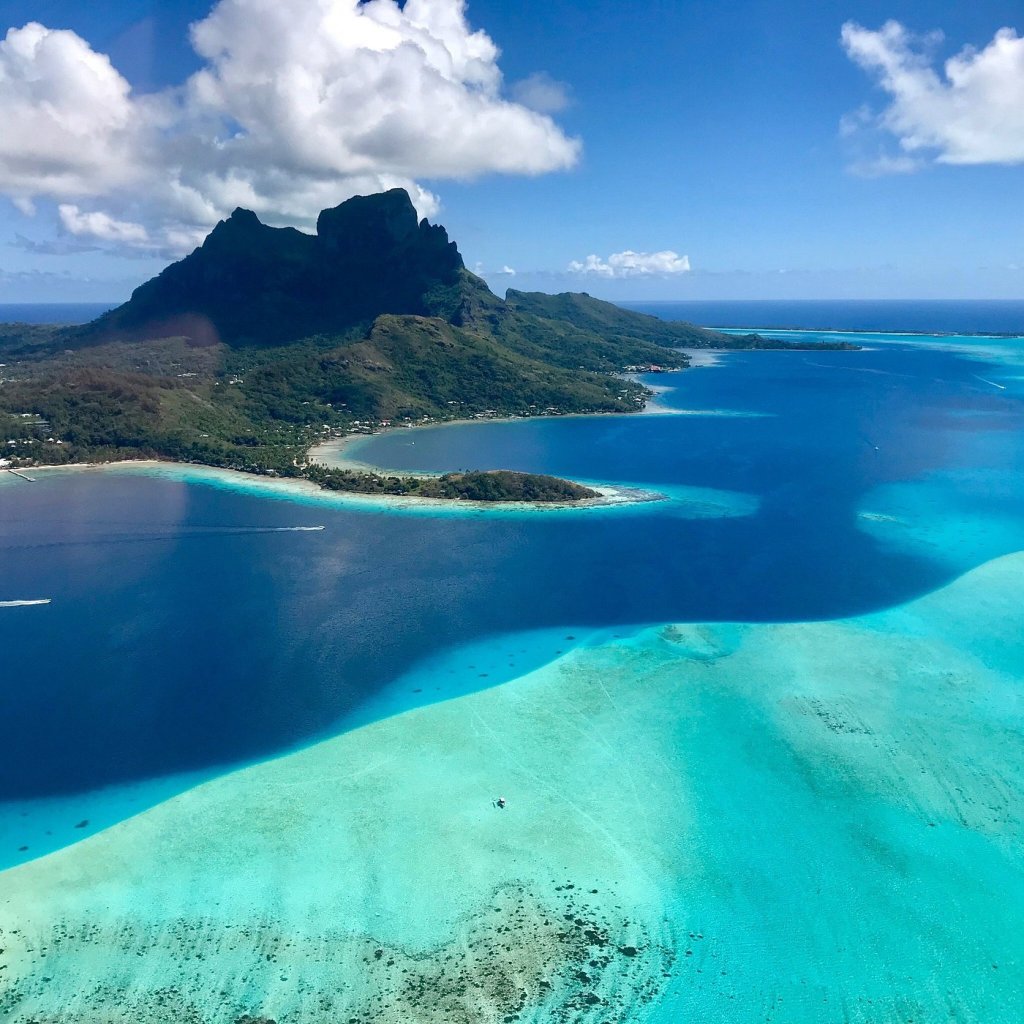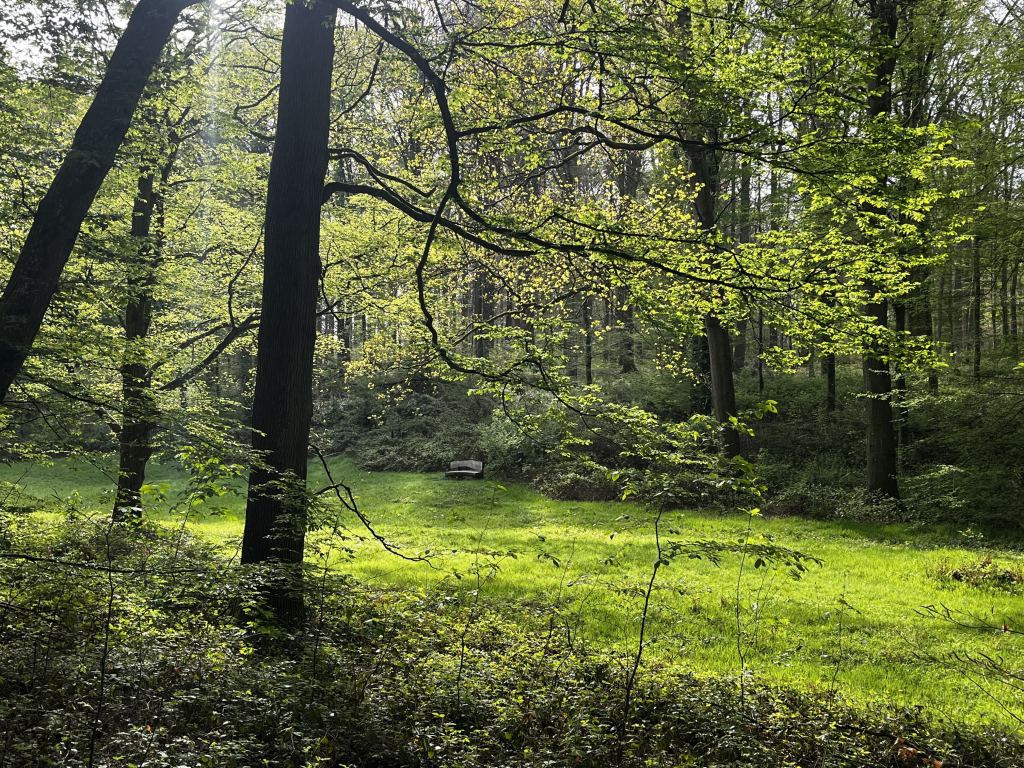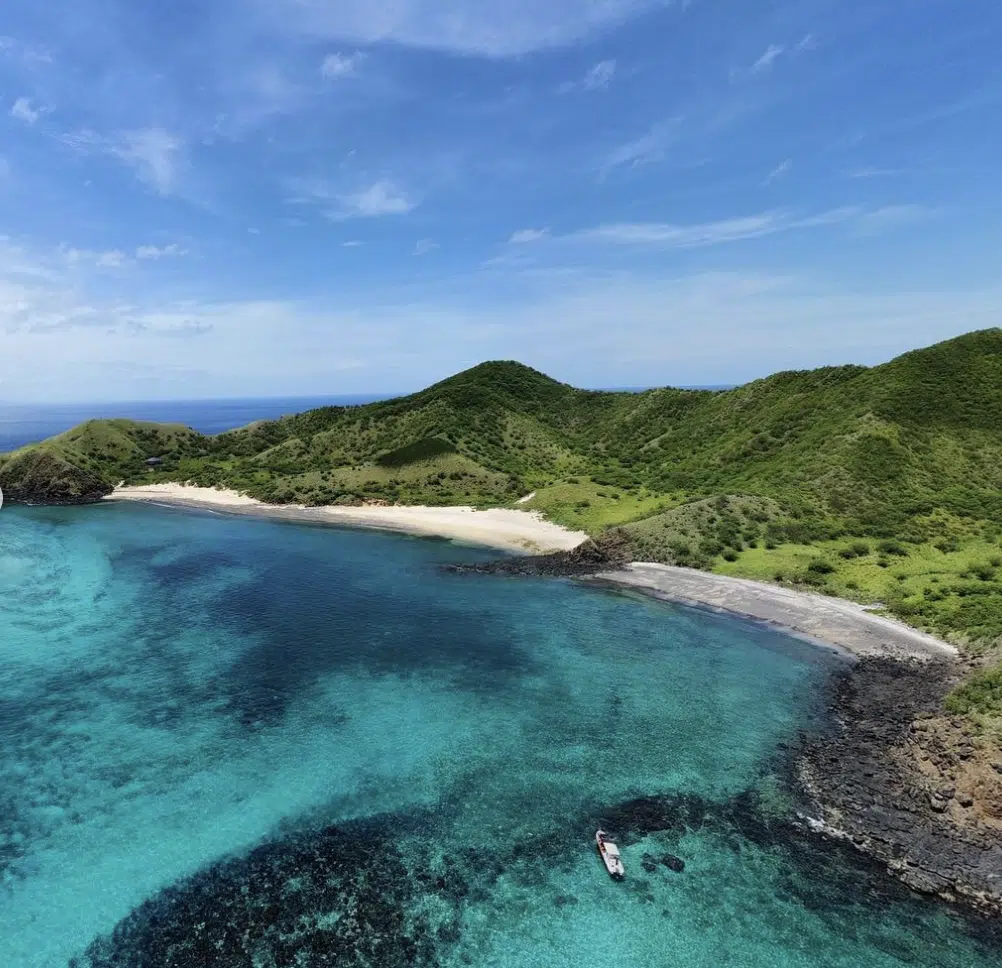Welcome to the Everglades and Francis S. Taylor Wildlife Management Area in Florida, USA.
In this blog post, we’ll cover EVERYTHING you need to know when you want to visit the area.
EVEN BETTER: We’ll provide you with inside tips and tricks!
Would you like to know what to expect from the Everglades? Check out the video below!
Overview
ToggleLocation
The Everglades are located in southern Florida, USA.
The Francis S. Taylor Management area spans over 1,600 square MILES within the central Everglades.
The full Everglades area spans more than 1,5 million acres.
DON’T MAKE THE MISTAKE of taking the Francis S. Taylor Management Area in the Everglades for just another swamp. It’s a slow-moving river with unique wildlife not seen anywhere else in the world!

History
Did you know that the Everglades has been around for over 5,000 YEARS? Yup, that’s right—even before the pyramids were built, this natural wonder was already thriving and full of life.
Back then the area was just a wild and swampy region in South Florida.
Native Americans called it “Pa-hay-okee,” which means “grassy water” in the Miccosukee language. They lived off the land, fishing and hunting the abundant wildlife.
In the 1800s, settlers moved in and the area started changing. They wanted to DRAIN the swamps and turn the land into farmland. However, the land was too difficult to turn into farmland, and many settlers abandoned their farms.
But the story doesn’t end there!
In the 1900s, PRESERVING the ecosystem became important for people. They took steps to protect the land and wildlife, creating the Everglades National Park in 1947.
Later, in 1950, the Florida Game and Fresh Water Fish Commission established the Francis S. Taylor Wildlife Management Area to help protect the wildlife in the area.
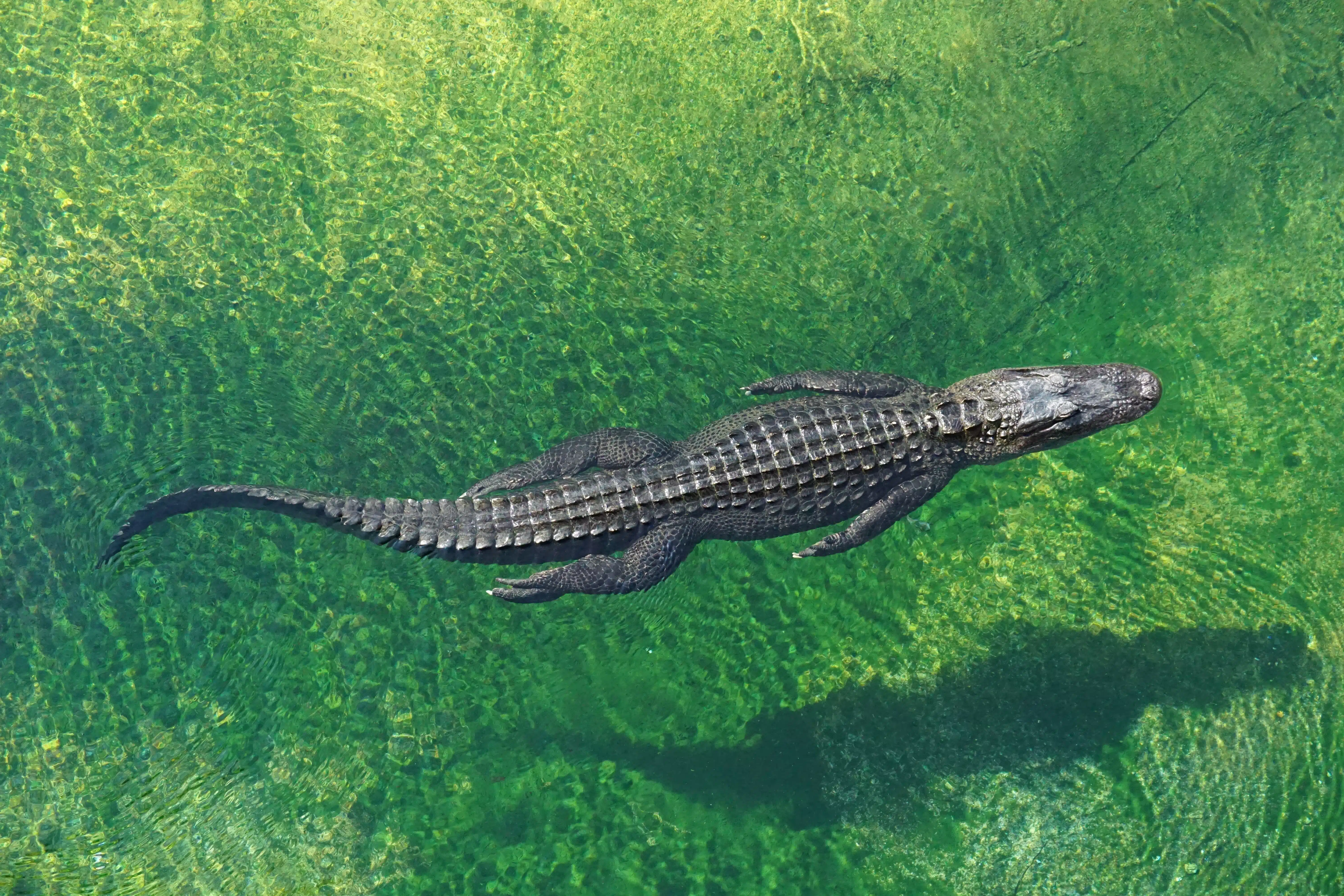
Cost
That’s the amazing thing about a state-owned wildlife area: there is NO ENTRANCE FEE.
We prefer to visit the Francis S. Taylor Wildlife Management area as it is cheaper than Everglades National Park.
The Everglades National Park has several entrance fees:
- Private Vehicle or Vessel Pass: $30 for 7 days
- Motorcycle Pass: $25 for 7 days
- Pedestrian/Cyclist/Human Powered Paddle: Varies
- Annual Pass: $55.
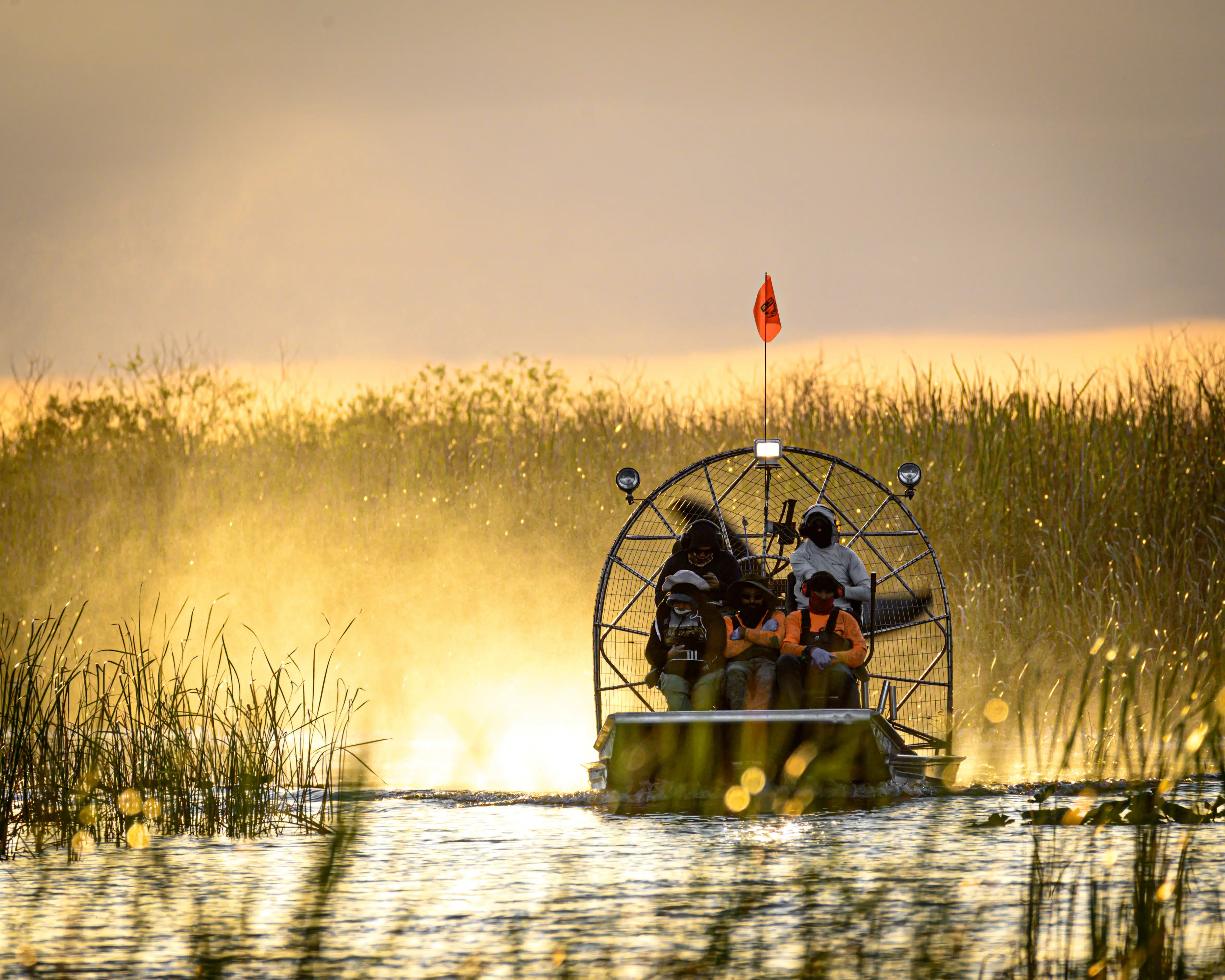
Things To Do
There are SO MANY things to do in and near the Everglades and Francis S. Taylor Wildlife Management Area.
We listed below our 9 absolute recommendations:
Take the Airboat
How often in your life do you take the airboat tour where it feels like you are flying on top of the swamps?
We love this activity as it allows you to experience the wildlife and unique ecosystem of the Everglades from up close! You can see alligators from 10 feet away!
Costs start at around $28.84, depending on the organization you book with.
These are some good organizations to book your tour with EvergladesTours, and Get Your Guide.
Biking
The Francis S. Taylor Wildlife Management Area offers a unique opportunity for biking enthusiasts.
It features MORE THAN 58 MILES (94 kilometers) of trail suitable for biking. The area has both easy and intermediate trails, catering to a variety of skill levels.
Don’t be afraid as you will see a wide range of WILDLIFE during your bike ride, making it a great spot for nature lovers.
One popular trail among bikers is the unpaved CANAL LEVEE TRAIL. Starting from Everglades Holiday Park, the trail runs south along the canal through the Everglades and Francis S. Taylor Wildlife Management Area, ending at US 41 at S-333.

Fishing
The Everglades Wildlife Management Area offers excellent opportunities for fishing.
One report even mentioned that well over 100 fish were brought to the boat, representing at least eight different species, including largemouth bass, peacock bass, bluegill, and black crappie.
Watching birds
Birdwatching is a popular activity in the Everglades Wildlife Management Area.
Many species of birds stay in this area, making it a wonderful destination for some birdwatching.
Bird species commonly seen in the area include snowy egrets, herons, and other wading birds. Swallows are also frequently spotted, along with occasional sightings of raptors.
Visit the Flamingo Gardens
This is another activity that we love to do!
We recommend you visit the Flamingo Botanical Garden, which contains more than 3000 types of animals and serves as a real wildlife sanctuary.
The entry ticket to Flamingo Gardens includes access to a large wildlife sanctuary with extensive botanical gardens and Florida native species.
INSIDER TIP: Admission to the garden also includes a tram tour.
We spent 2-3 hours sightseeing, and we would have loved to stay there longer.
Prices start at $21.86.
Visit Shark Valley
This is an AMAZING 15-mile loop trail that takes you through beautiful places filled with wildlife and gorgeous landscapes.
At Shark Valley, you can enjoy a wildlife-viewing tram tour through the sawgrass prairie.
This tour includes a stop at a 65-foot observation tower, which offers spectacular views of the surrounding landscape.
If you’re planning to take the tram tour, the cost is $28 for adults, $22 for seniors (62+), and $15 for children aged 3-12.

Hiking Trails
With a variety of trails for hikers of all skill levels, the Francis S. Taylor Management Area is the perfect place to hike in Florida’s natural beauty.
BELOW is a list of all the hiking trails we recommend!
Anhinga Trail – This trail is a 0.8-mile round trip and is one of the most popular trails in the park due to its easy accessibility and high chances of spotting wildlife.
Conservation Levee Greenway: This trail is considered one of the best places to hike in the area according to users from AllTrails.com. The area also contains 28 miles (45 kilometers) of trails for hiking.
Sawgrass Recreation Park via L-38E and US 27: This route offers opportunities for hiking and offroading.
Pinecrest via Loop Road: This is a more challenging trail measuring 29.2 miles, and it includes offroading.
Where to Stay
We made a list below of the best places to stay in the Everglades.
Luxury Option:
DoubleTree by Hilton Hotel Sunrise – Sawgrass Mills: This is a luxury hotel known for its excellent service and comfortable rooms. It is one of the best hotels out there!
Mid Budget Option:
Hampton Inn & Suites by Hilton Miami-Doral/Dolphin Mall: This mid-budget hotel is known for its strategic location near shopping areas and offers a range of amenities.
Budget Option:
Hampton Inn Ft. Lauderdale Airport North Cruise Port: A budget-friendly option, this hotel has received over 2,642 positive reviews and is well-known for its service and cleanliness.
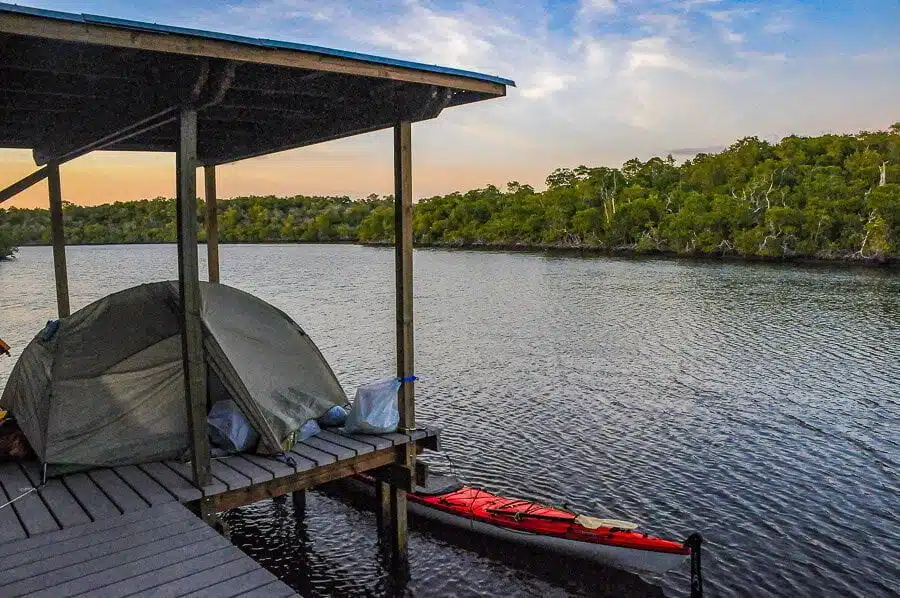
Campgrounds
The Everglades Wildlife Management Area is not a typical campground. It does NOT have DESIGNATED campgrounds.
You can camp at wilderness sites in the Everglades, BUT you need a permit for overnight camping.
However, there are still MANY great campsites in the Everglades:
- Long Pine Key Campground – located in the heart of the Everglades, this campground offers tent and RV camping with amenities like restrooms, showers, and picnic tables.
- Flamingo Campground – Situated at the end of the park’s main road, this waterfront campground offers both tent and RV camping and provides access to various water activities.
- Gulf Coast Campground – This campground is located in the northwest corner of the park and boasts excellent views of the Gulf of Mexico.
- Midway Campground – a small, secluded campground located midway through the park, perfect for those seeking solitude and privacy.
- Pinecrest Campground – a primitive, first-come, first-served campground in Big Cypress National Preserve that provides an excellent opportunity to spot wildlife.
For more campgrounds, check out this website!

Habitat and Management
The management of this area is important to ensure the protection, restoration, and conservation of the wildlife and their habitats.
Park officials and wildlife management teams work tirelessly to maintain the natural balance and ecological integrity of the park.
Restoration efforts include projects that aim to revive damaged habitat areas, such as the REMOVAL of invasive species like the Melaleuca tree, and water flow restoration projects.
Additionally, the application of controlled BURNS and other techniques are used to promote the health of the ecosystem.
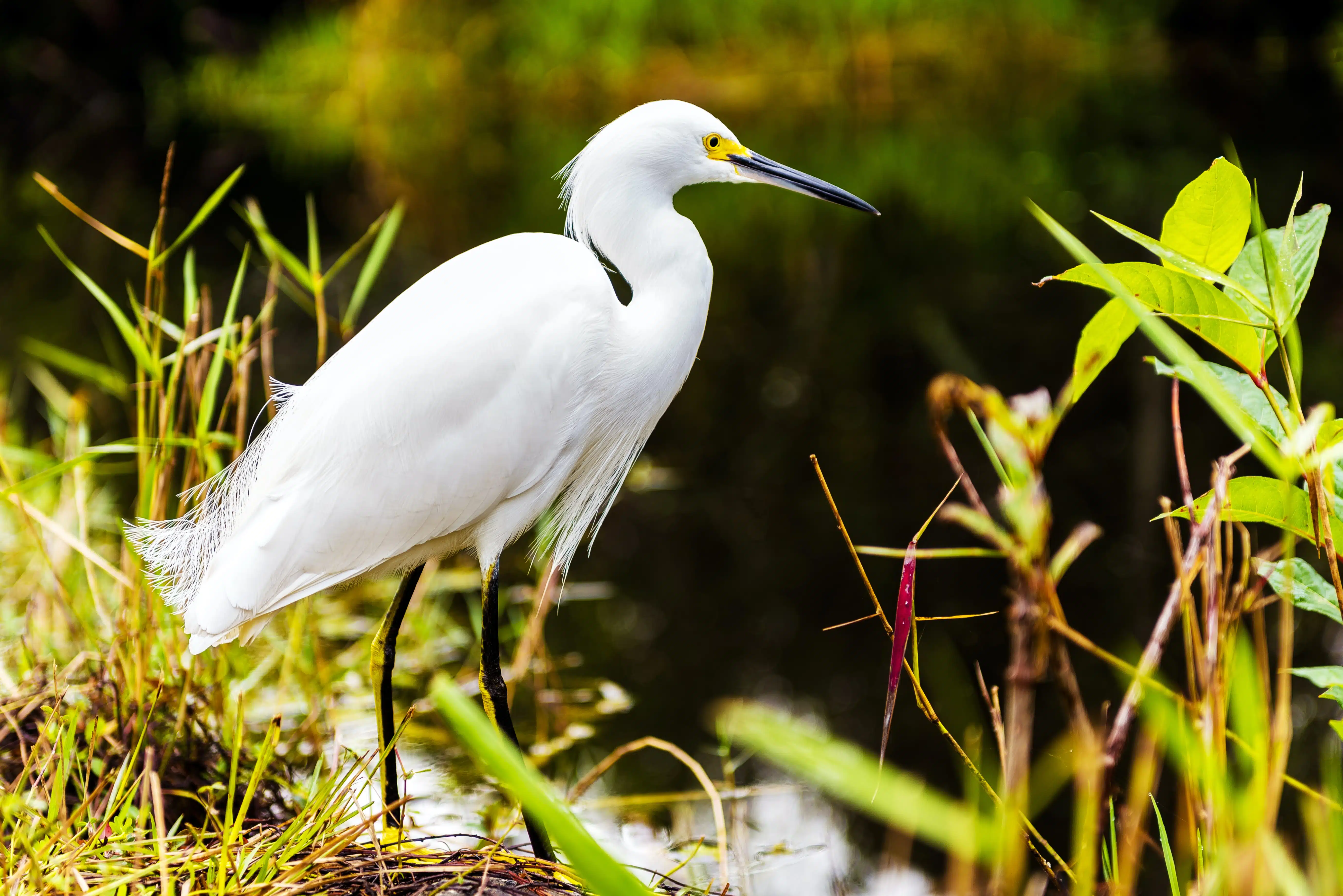
Wildlife
Here, you can witness some of the most AMAZING wildlife in the world.
You will spot the majestic American alligators and see many West Indian manatees.
You should also keep an eye out for the brilliant blue plumage of the Great Egret, the sleek form of the Wood stork, or the colorful wings of the Roseate Spoonbill.
IT GETS BETTER:
Let’s not forget the MAMMALS either! You might just spot a playful river otter or the elusive Florida panther lurking in the shadows of the dense sawgrass.
Expand your Florida wildlife list with a visit to this Great Florida Birding and Wildlife Trail site. If you want a full checklist of the animals you can see in Everglades and Francis Taylor wildlife, you can check out this website!
Conservation of the area
The Francis S. Taylor Wildlife Management Area are important ecosystem of global significance, which houses numerous rare and endangered species.
However, due to human activities, including urban development and water management projects, this unique ecosystem has been threatened with degradation and loss over the years.
To counteract this, the park has implemented a variety of conservation and restoration efforts.
Measures include water flow restoration projects, invasive species removal, wildlife management, and habitat restoration.
The park officials work arduously to maintain ecological integrity and preserve the Everglades for future generations.
These conservation efforts ensure that the natural balance of the park is maintained and it remains a thriving wilderness with a diverse array of wildlife and opportunities for visitors to experience its unique ecosystem
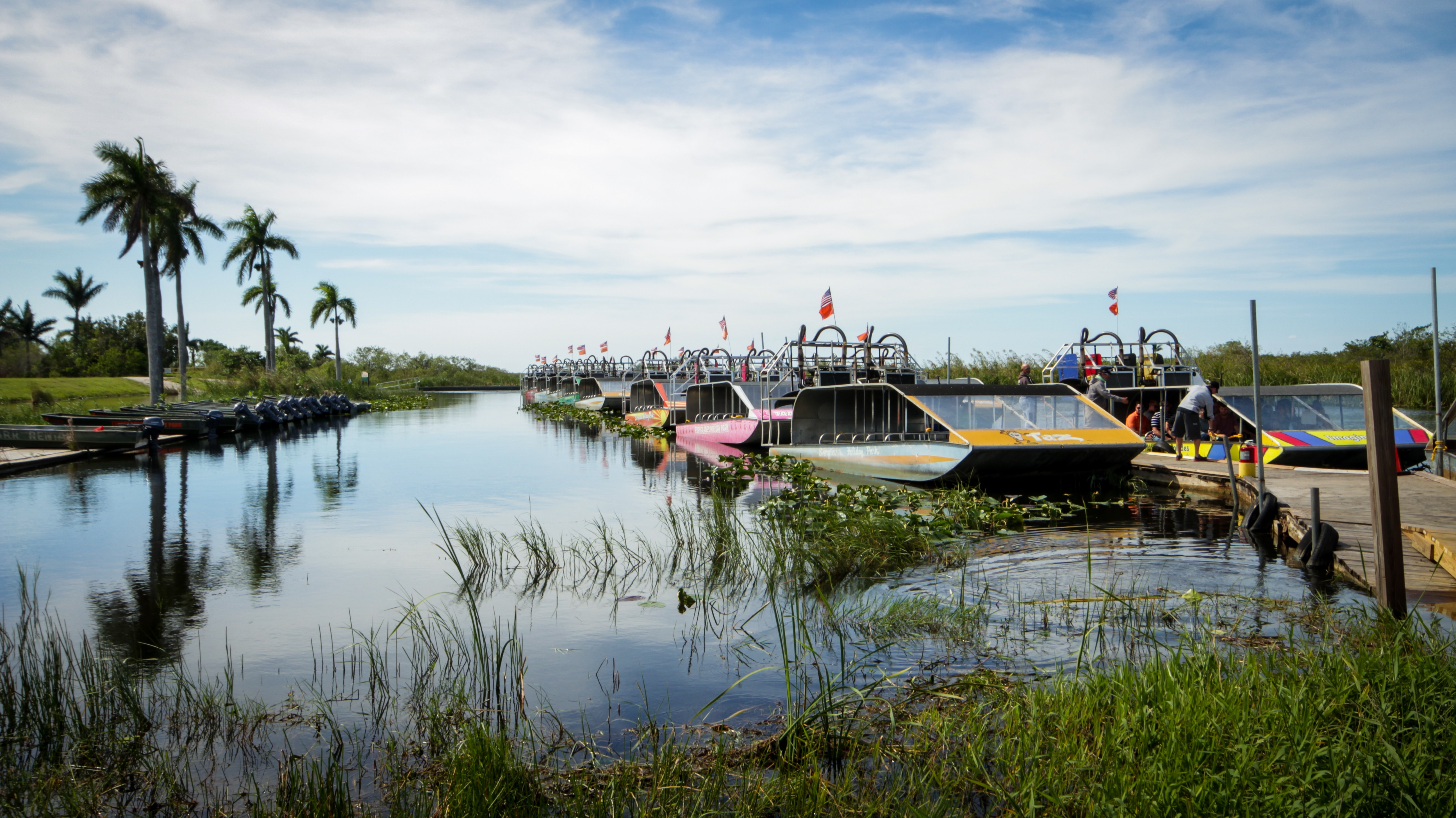
Nearby Attractions
Ernest F. Coe Visitor Center
The Ernest F. Coe Visitor Center is a key location for visitors to the Everglades National Park and is often considered the main visitor center.
However, it’s important to note that it is not located within the Francis S. Taylor Wildlife Management Area, but rather at the ENTRANCE to the Everglades National Park.
Named after one of the original proponents for the establishment of Everglades National Park, the Ernest F. Coe Visitor Center serves as a gateway to the park and offers a range of amenities and services.
Visitors can find displays about the unique ecosystem of the Everglades and interactive exhibits. The center also provides maps, brochures, and up-to-date information on the park’s conditions.
The visitor center is also the starting point for a 38-mile road that winds through different habitats within the park, including pine rockland and cypress.
However, it is specified that no fishing is allowed at the Ernest F. Coe Visitor Center lakes.
Sawgrass Recreation Park
Sawgrass Recreation Park is located in the heart of Florida’s Everglades.
The park is known for its AMAZING airboat tours that take guests through the swamp waters. All tours are guided by experienced captains who share fascinating insights about the area.
The park is located just 30 minutes outside downtown Fort Lauderdale. The park is easily accessible.
Chokoloskee Bay
Chokoloskee Bay is a must-visit spot in the Everglades and Francis S. Taylor Wildlife Management Area.
It’s important to note that Chokoloskee Bay is located on the western edge of the Everglades, near the Gulf of Mexico.
The bay is known for its rich biodiversity and offers a unique opportunity to experience the natural beauty of the Everglades.
It’s a popular spot for boating, fishing, and wildlife viewing.
Visitors can expect to see a variety of bird species, as well as other wildlife such as alligators and manatees.
The area is also home to the historic Smallwood Store, an old trading post that now serves as a museum showcasing the history and culture of the Everglades.
For those who love water activities, Chokoloskee Bay is a paradise. You can rent canoes, kayaks, or motorboats to explore the mangrove tunnels and small islands dotted around the bay.
Long Pine Key
Long Pine Key is known for its beautiful pine rockland habitat, which is home to many unique species of plants and animals. This area differs greatly from the marshy, waterlogged environments often associated with the Everglades.
For outdoor enthusiasts, Long Pine Key offers several recreational opportunities. There’s a campground open seasonally (November to May) that provides facilities for both tents and RVs. The area also features a fishing pond and multiple hiking trails, including the Long Pine Key Nature Trail which winds through the pine forest.
Another highlight in this area is the Long Pine Key Trail – a 15-mile loop trail that takes visitors through stunning settings of wetlands, sawgrass prairies, and more.

FAQ
What is Shark Valley in the Everglades National Park?
Shark Valley in the Everglades National Park is a unique and awe-inspiring destination for those looking to explore the natural beauty of South Florida.
Shark Valley is located in the Francis S. Taylor Wildlife Management Area. It is a 15-mile loop trail that takes visitors through a stunning setting of wetlands, sawgrass prairies, and cypress swamps. Along the way, you’ll have the opportunity to spot an incredible array of wildlife, including alligators, snakes, turtles, and, of course, sharks.
Despite its name, however, there are no actual sharks in Shark Valley – the name comes from the shape of the surrounding landscape, which is said to resemble a shark’s dorsal fin.
Whether you’re a nature enthusiast or simply looking for a unique day trip, Shark Valley is a must-visit destination in the Everglades National Park.
What is the best time of year to visit the Everglades?
Typically, the best time of year to visit the Everglades is during the dry season, which runs from December to April. During this time, visitors can enjoy cooler temperatures, less rainfall, and fewer mosquitos and other insects.
The dry season is also the peak season for wildlife viewing, with birds and other animals migrating to the area during this time. However, it’s important to note that the Everglades is a unique ecosystem that can be visited year-round, with each season offering its own unique experiences and opportunities to explore the wilderness.
Is there an entrance fee to the Everglades and Francis S. Taylor Wildlife Management Area?
There is no entrance fee to Francis S. Taylor Wildlife Management Area, as it is a state-managed area.
However, there is an entrance fee to visit the Everglades National Park, with fees differing depending on the type of pass and the duration of your visit.
The current entrance fee for the Everglades National Park is $30 per vehicle for a seven-day pass, $25 per motorcycle, and $15 per person for a seven-day pass for those entering on foot or bicycle.
Annual and lifetime passes are also available for those who wish to make multiple visits or support the park.
It’s important to note that fees are subject to change, so it’s always best to check the official park website for the most up-to-date information.
What types of wildlife can I expect to see in the park?
The Everglades and Francis S. Taylor Wildlife Management Area have a diverse range of wildlife species, including many rare and endangered species.
Visitors to the park can witness a wide variety of animals, such as alligators, crocodiles, turtles, snakes, manatees, dolphins, Florida panthers, black bears, bobcats, and many bird species, including egrets, herons, pelicans, and roseate spoonbills. These unique animals are what make the park a haven for nature lovers.
It is important to note that the wildlife is wild, so visitors should keep their distance and avoid feeding the animals to ensure that both humans and animals remain safe.
Can I fish or hunt in the Everglades?
Fishing is allowed in the area, but specific rules and regulations apply. For example, individuals must obtain a valid Florida fishing license and follow catch limits and size restrictions. Certain areas of the park may also be designated as catch-and-release-only zones.
Hunting is not allowed in the Everglades National Park, but it is permitted in certain areas of the Francis S. Taylor Wildlife Management Area during specific seasons. Again, hunters are required to follow all regulations and obtain proper licenses. It is important to check with the park officials or the Florida Fish and Wildlife Conservation Commission for detailed information and guidelines.
Are there any organized tours available of the park?
Yes, there are a variety of organized tours available in the Francis S. Taylor Wildlife Management Area. These tours provide visitors with an opportunity to learn about the diverse ecosystem, experience the wildlife up close, and explore the park in exciting ways.
The park offers airboat tours, ranger-led walks, tram tours, canoe and kayak rentals, and even overnight camping trips. Visitors can also find private tour companies that offer guided tours of the park with experts who can provide in-depth information about the park’s unique history, wildlife, and conservation efforts.
It’s always best to check with the park officials or conduct research beforehand to find the best tour options that suit your interests and travel style restrictions or guidelines before visiting.
How do I get to the Everglades and Francis S. Taylor Wildlife Management Area?
The Everglades National Park can be accessed from the east or west coast of Southern Florida. The main entrance and visitor center are located on the eastern side of the park, approximately 40 miles southwest of Miami. Alternatively, visitors can access the park from the western side via the Gulf Coast Visitor Center, located in Everglades City.
To get to Francis S. Taylor Wildlife Management Area, visitors can take US Highway 27 to Highway 29, and then follow the signs towards the park. It’s important to note that there are several access points within the park, and some areas may require a high-clearance vehicle or boat. Visitors should check with park officials or conduct research beforehand for the best route and means of transportation.
Is there a visitor center in the park?
Yes, the Everglades National Park has several visitor centers where visitors can obtain more information about the park’s history, amenities, and activities.
The main visitor center is the Ernest F. Coe Visitor Center, which is open daily from 8 a.m. to 4:30 p.m. Other visitor centers in the park include the Gulf Coast Visitor Center, Shark Valley Visitor Center, and Flamingo Visitor Center. At these centers, visitors can access park maps, and educational exhibits, and talk to park rangers and volunteers who have extensive knowledge about the park’s unique environment and wildlife.
Are pets allowed?
Yes, pets are allowed on designated trails and areas in both the Everglades National Park and the Francis S. Taylor Wildlife Management Area. However, pets must be on a leash that is no longer than six feet in length at all times, and it’s recommended to limit pets’ exposure to wildlife and other potential hazards in the park to ensure everyone’s safety. It’s also important to clean up after pets and dispose of waste properly.
What amenities are available in the park?
The Francis S. Taylor Wildlife Management Area offers several amenities to ensure visitors have an enjoyable and comfortable experience. In the Everglades National Park, visitors can find:
- Visitor centers with exhibits and information about the park’s history and ecosystem
- Restrooms and showers
- Picnic areas and pavilions
- Campgrounds for tent and RV camping
- Boat ramps and rentals for kayaks, canoes, and airboats
- Hiking trails and boardwalks
- Food and souvenir shops
In addition, visitors can access various tours and programs offered by the park rangers, including tram tours, canoe and kayak rentals, and ranger-led nature walks, allowing them to learn more about the unique environment and wildlife of the park.
Are there lions in the Everglades?
While the Everglades and Francis S. Taylor Wildlife Management Area offer a wealth of wildlife experiences, spotting a lion is not one of them.
Lions are not native to Florida or the Everglades, and they are not found within the boundaries of the Francis S. Taylor Wildlife Management Area.
However, visitors can still witness an incredible diversity of wildlife in these areas, from alligators and panthers to a vast array of birds and fish.
Exploring this unique ecosystem is a must for anyone interested in experiencing the natural beauty of Florida.
So grab your binoculars and head out into the wild to discover all that the management area has to offer.
Are there tigers in the Everglades?
The Everglades and Francis S. Taylor Wildlife Management Area are home to a diverse range of wildlife, lending themselves to being a prime location for animal enthusiasts to explore.
Among the many creatures that reside in these areas are the elusive, magnificent tigers, which are known to have called the Everglades their home in the past.
While spotting a tiger in these regions might be difficult, exploring the vast expanse of the Francis S. Taylor Wildlife Management Area is an adventure in and of itself, allowing visitors to witness the beauty of the natural world in all its glory.

